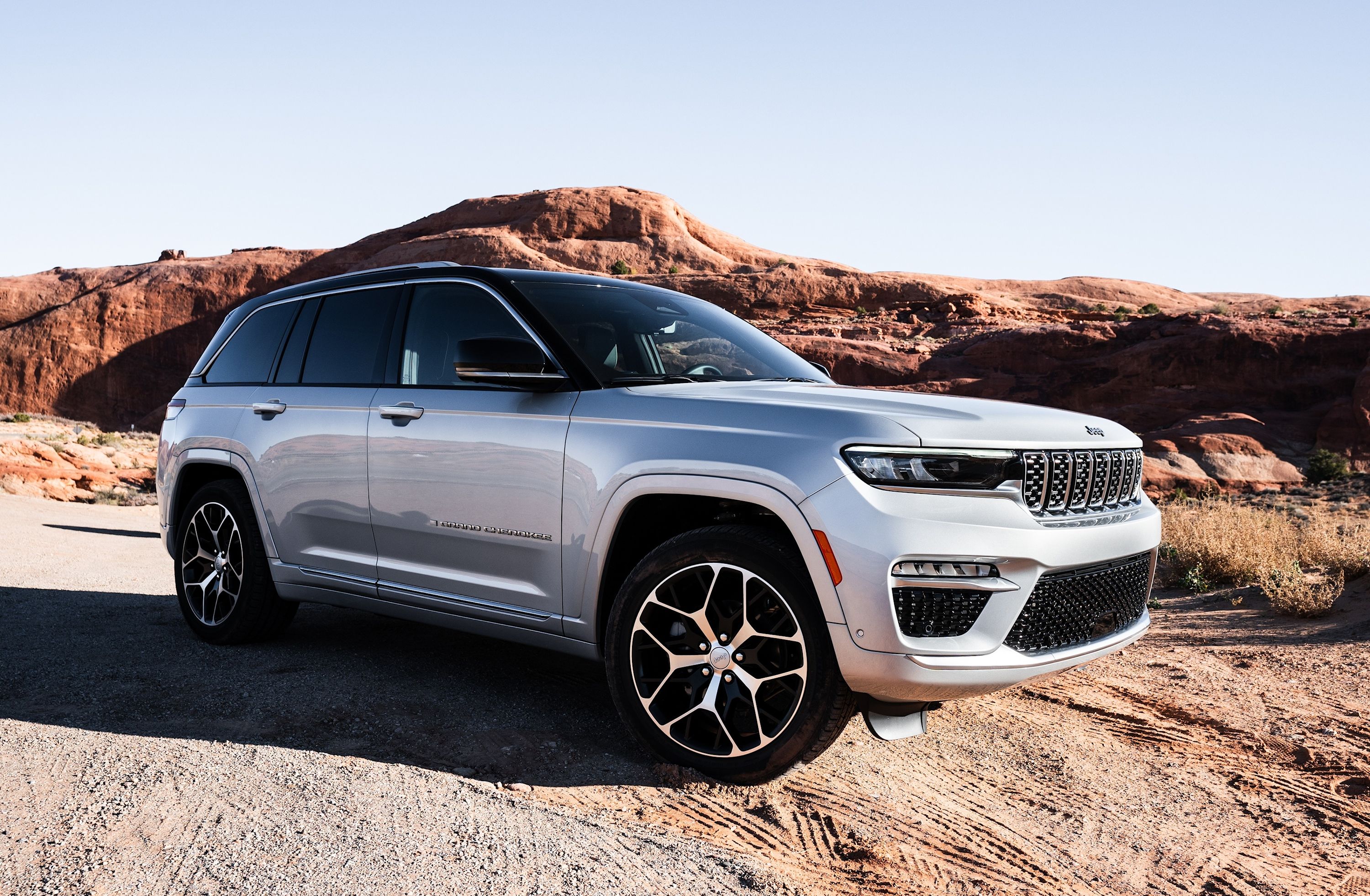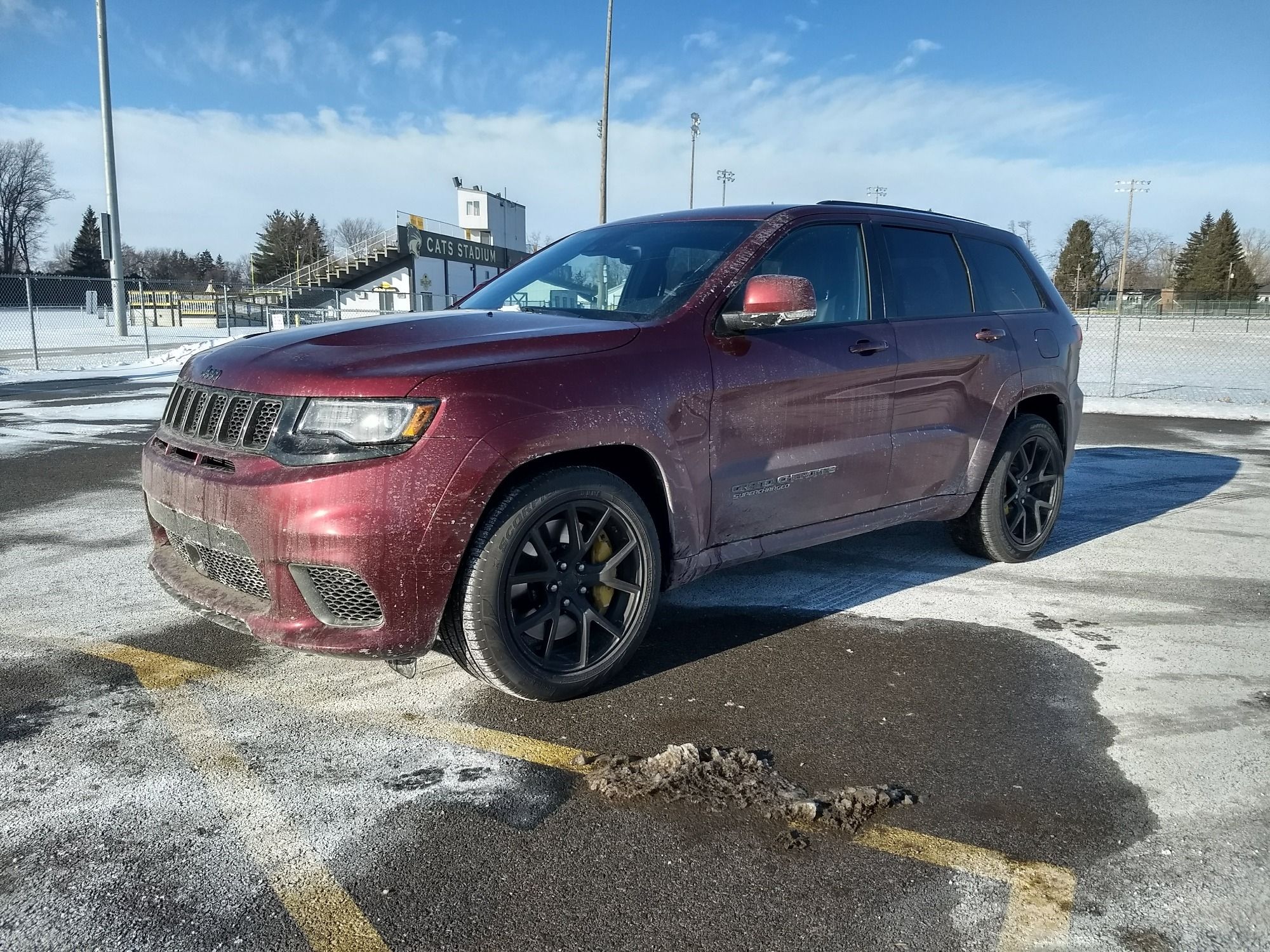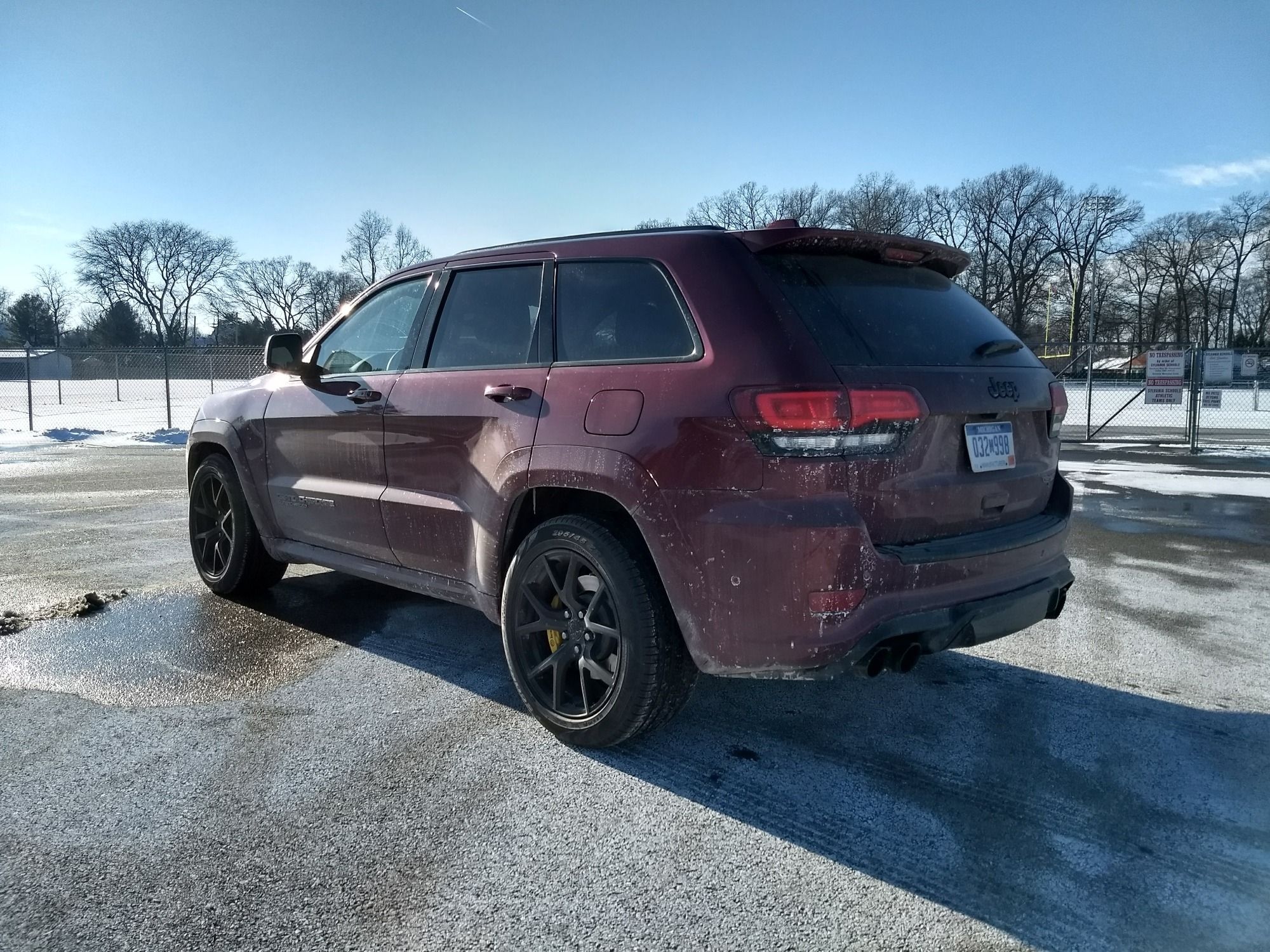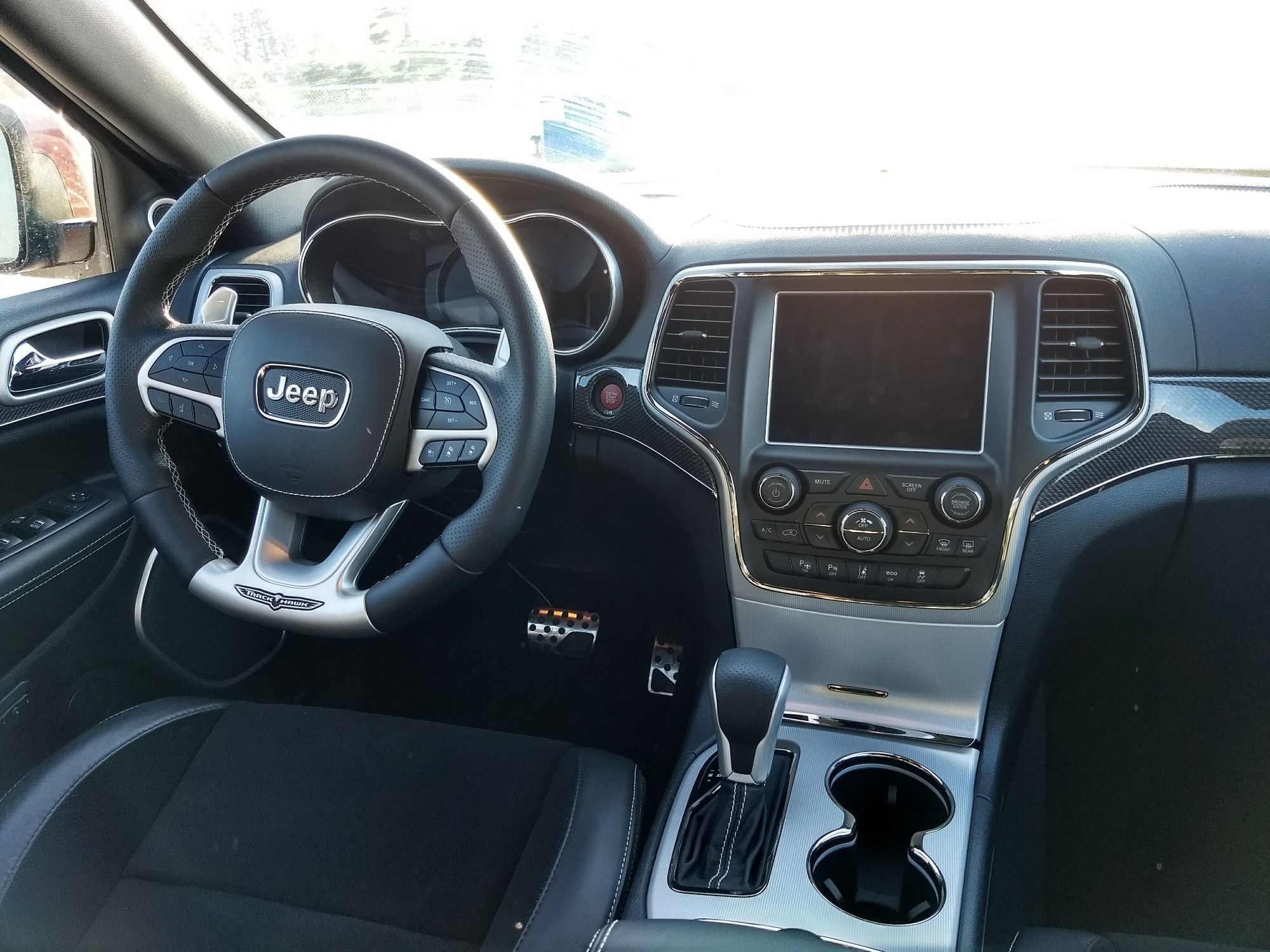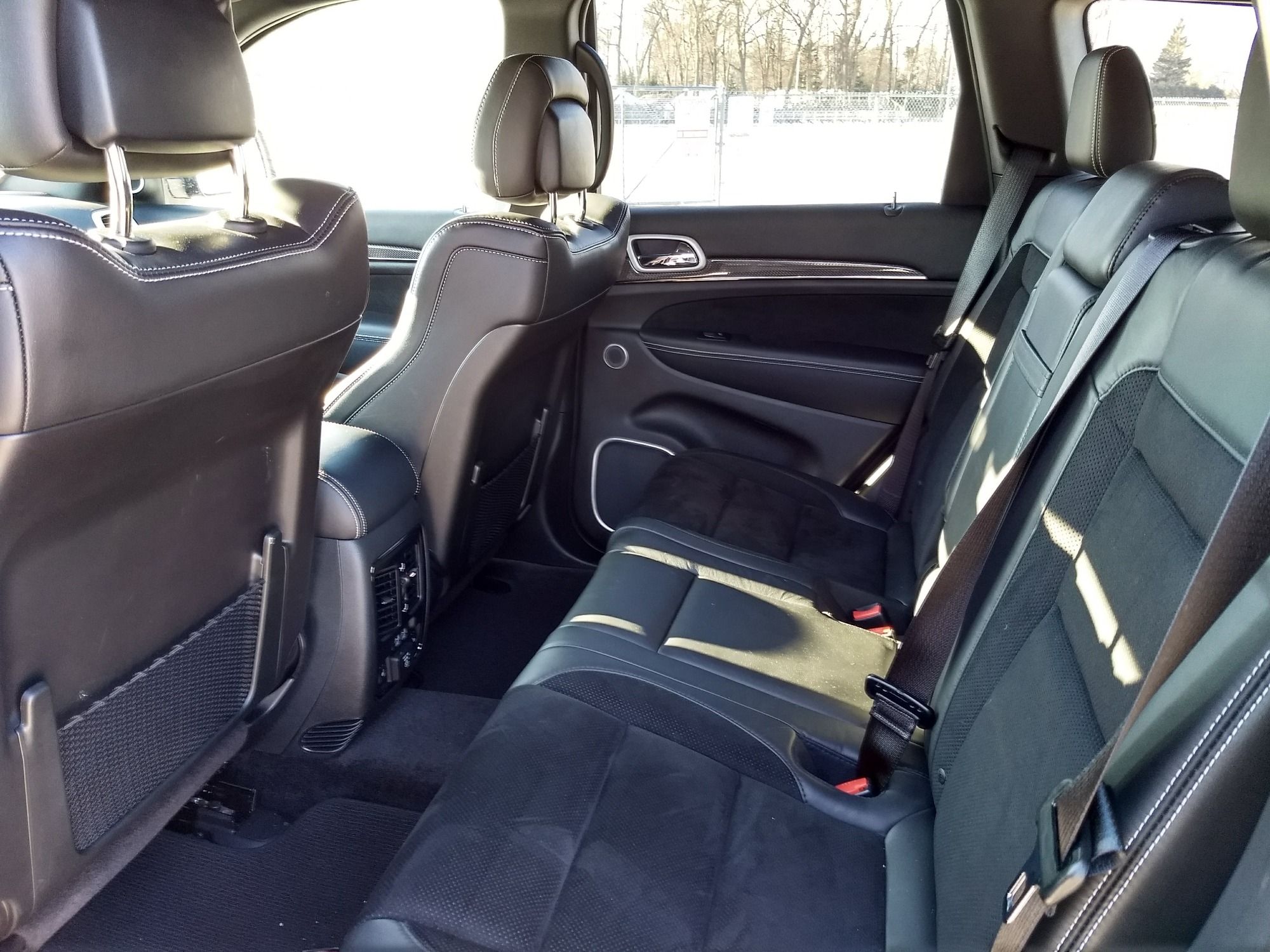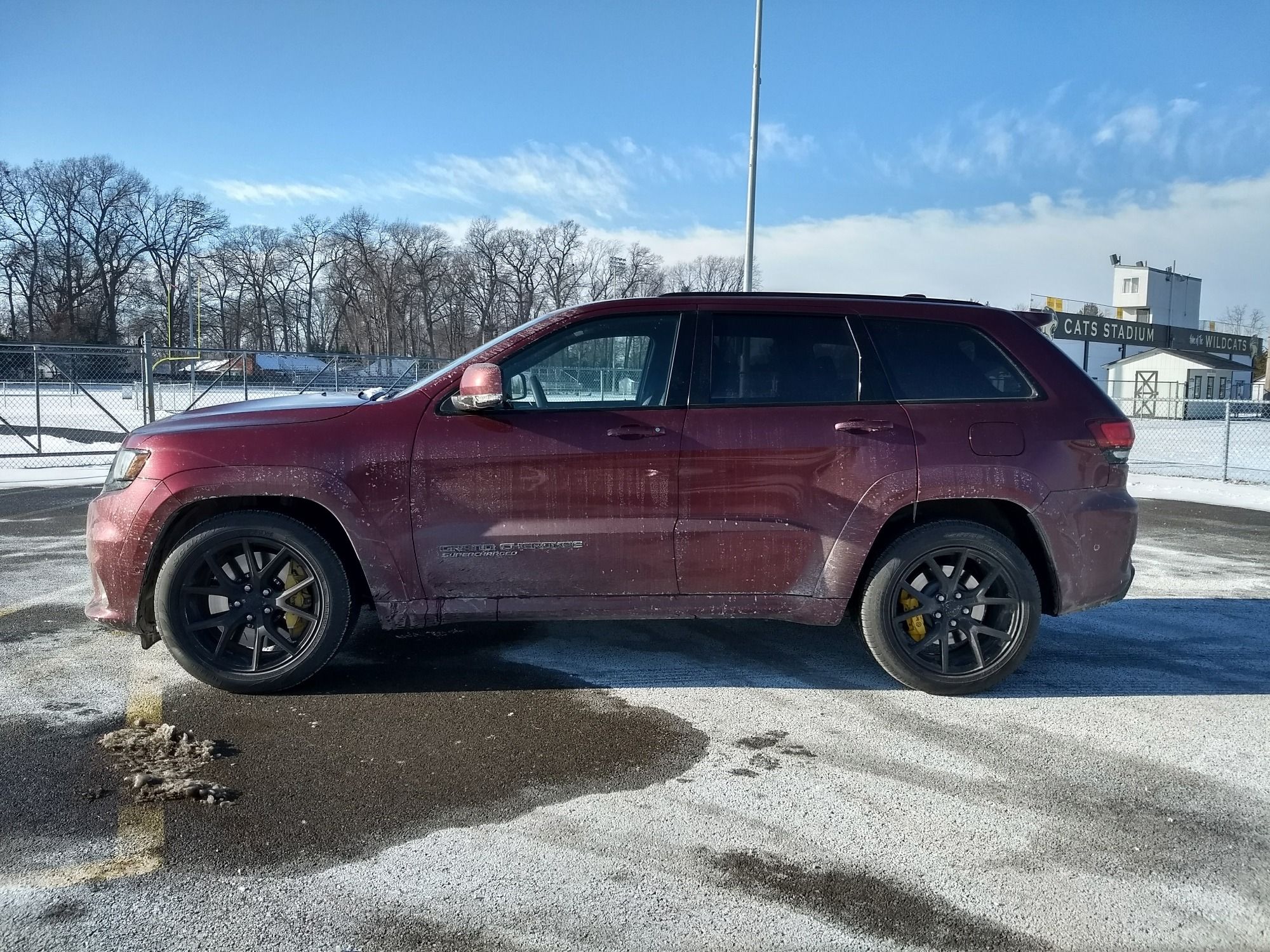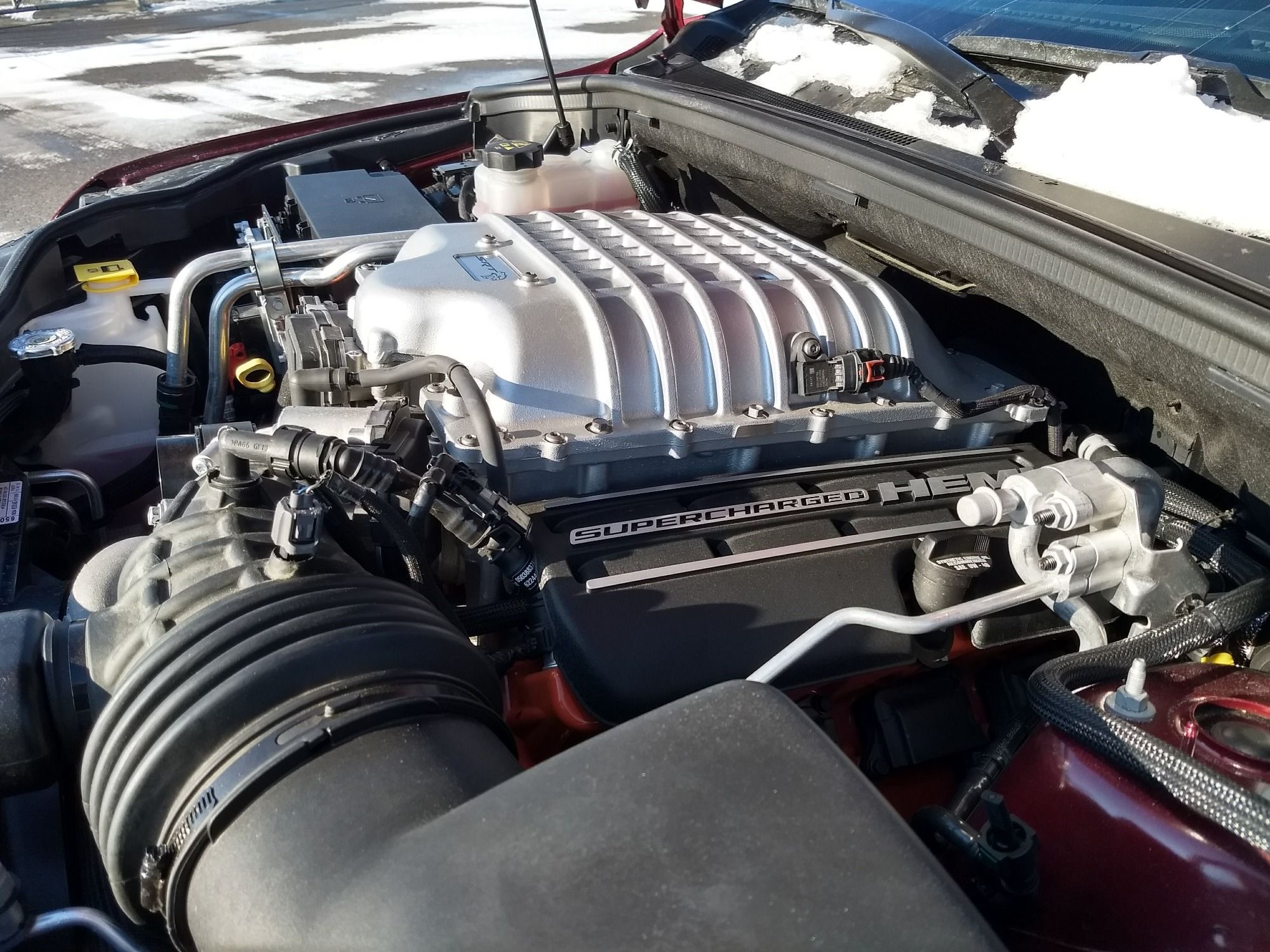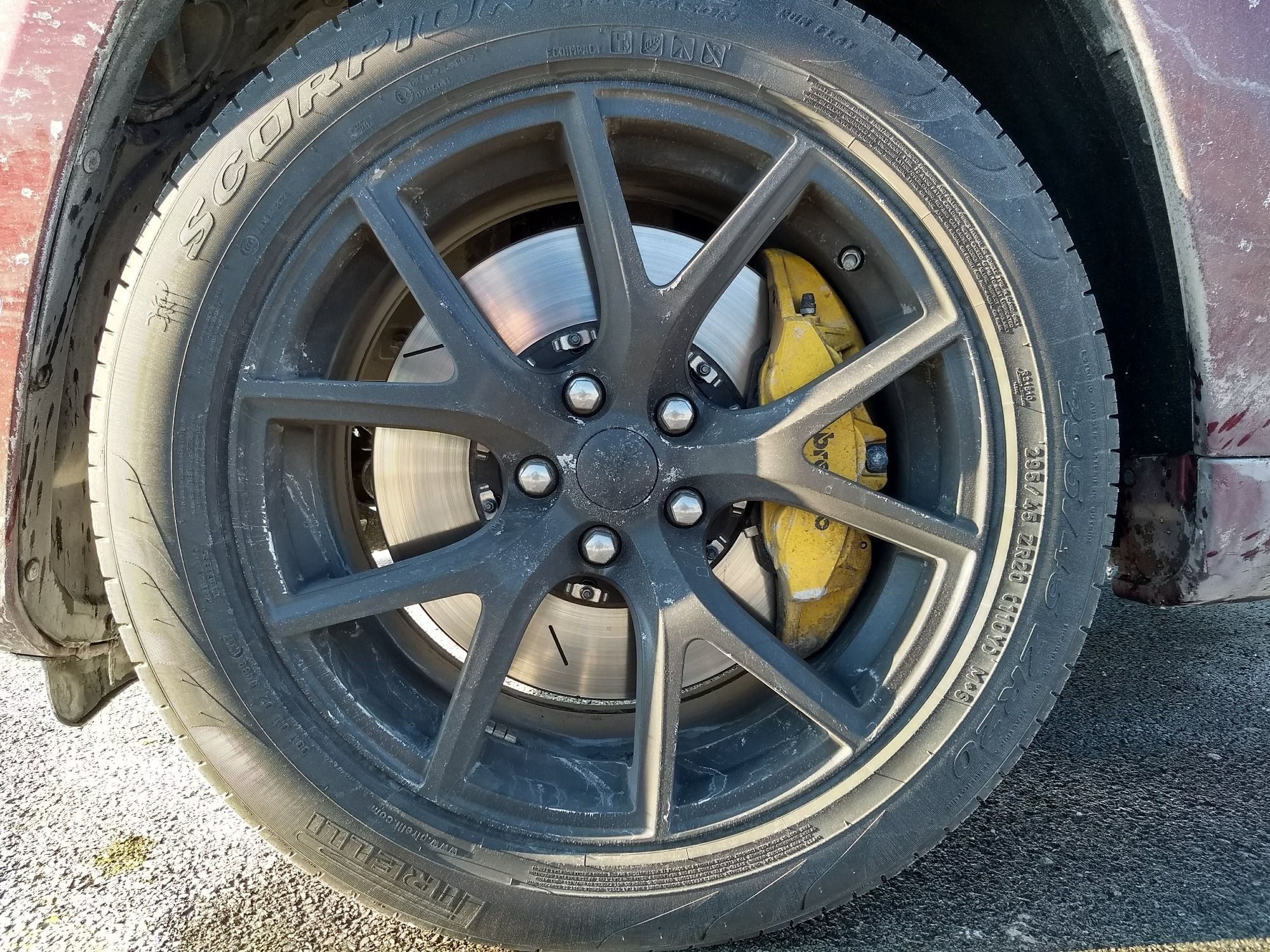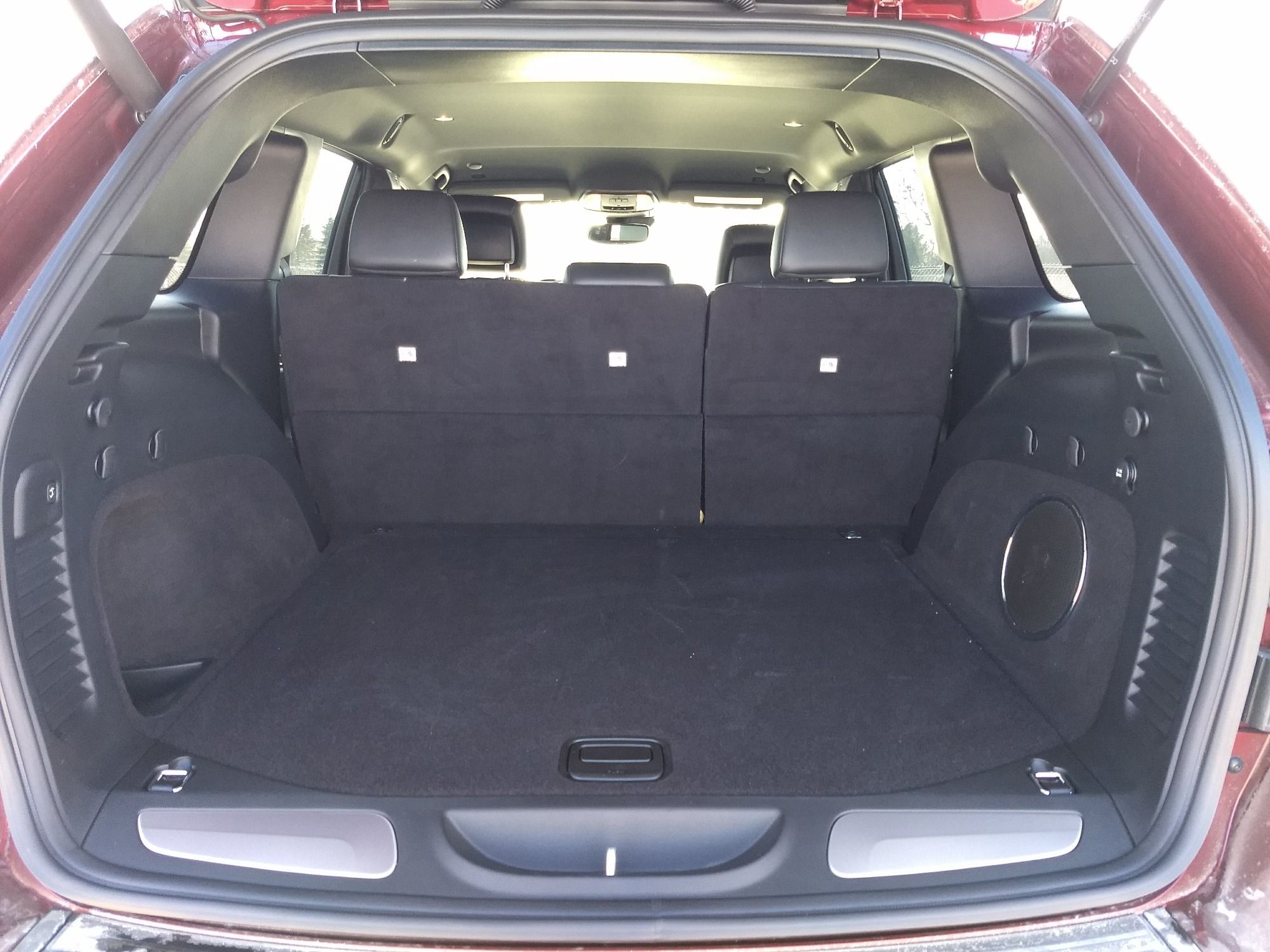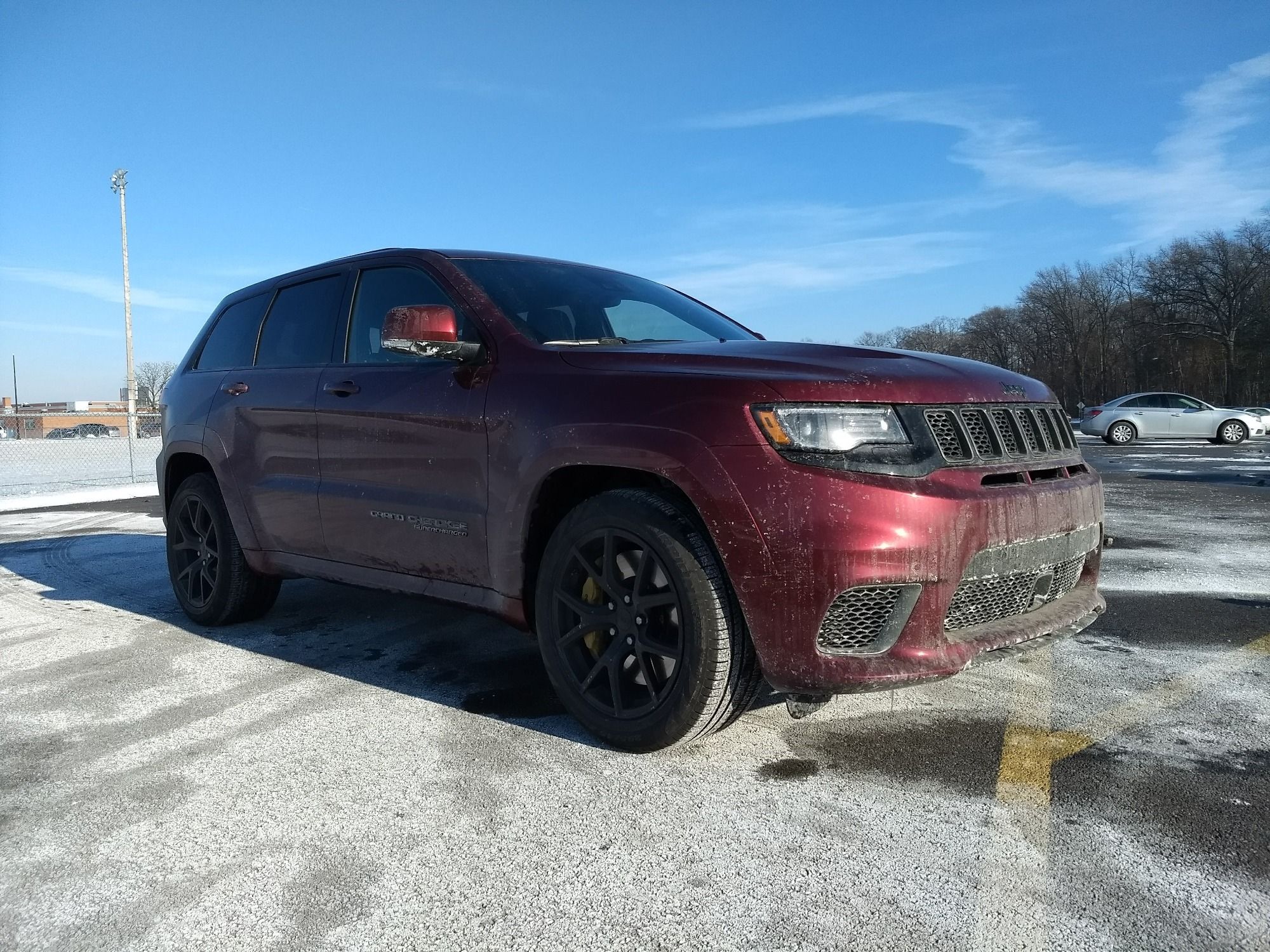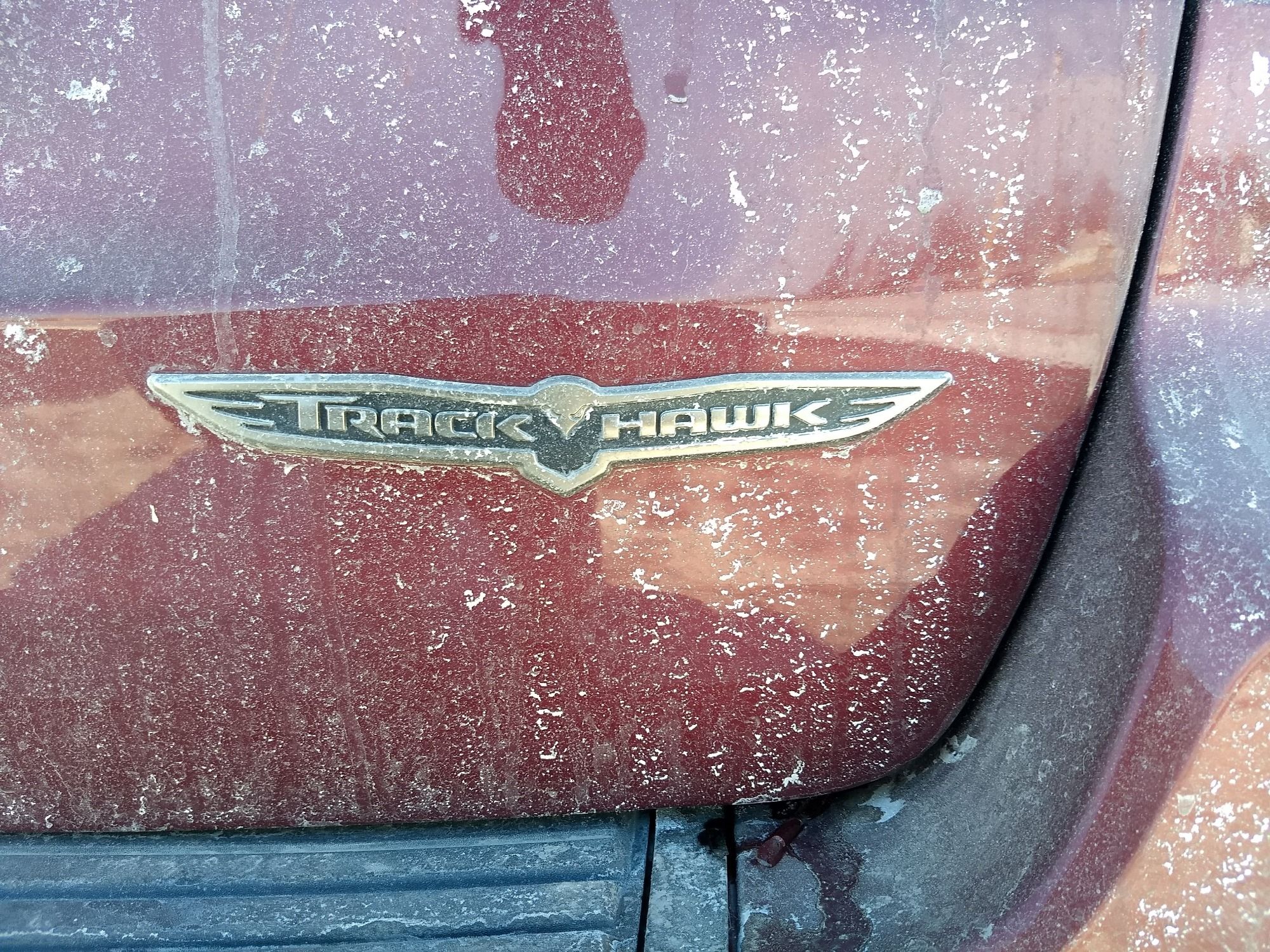2019 Jeep Grand Cherokee Trackhawk Test Drive Review: It's Fast, Crazy Fast
Having over 700 hp waiting for you to do with you as you please after a long flight is the best way to get over jet lag. Who needs sleep? My head hurt and the airline food was horrible. But there it was: a Velvet Red 2018 Jeep Grand Cherokee Trackhawk, parked in the dead of winter, covered in several inches of snow. Underneath that white powder was ice. Welcome to Detroit in January.
Local authorities suggested that people stay away from the roads on this particular Friday afternoon, but I had an over an hour drive ahead of me and the weather was only getting worse. I also had lots of horsepower, more than I could ever need. What could possibly go wrong? And so began my week-long adventure with the first-ever Grand Cherokee Trackhawk. The journey home was treacherous. For example, a suicidal driver tried to challenge me to a highway drag race on US 23 a few miles from the Ohio border in near whiteout conditions. I lost. I didn't want to die under these particular circumstances.
With 707 horsepower and 645 lb-ft of torque at my disposal, this pickup truck driver stood no chance of winning – if we were on a closed straightaway sans snow storm. Meanwhile, the heated seats and steering wheel warmed me up nicely.
I was enjoying myself, listening to my favorite hometown radio station despite the SUV being equipped with SiriusXM radio. Honestly, I was a bit worried about what over 700 hp would be like in regular driving. Full disclosure: I'd never experienced the Hellcat engine until now. That said, I'll tell you this: it's a sweetheart of an engine that'll treat you well when you behave. But if you're in the mood to push it, you'll be rewarded with a religious experience full of throttle, exhaust note, and heavenly joy. Jeep managed to shoehorn the supercharged 6.2-liter Hellcat V8 under the hood of its popular Grand Cherokee for no good reason. I'm thrilled they did it.
The eight-speed automatic transmission sends power to all four wheels, so there's plenty of grip and, in a drag race under ideal conditions, helps make the Grand Cherokee Trackhawk faster off the line than the Challenger SRT Hellcat. Jeep claims a 0-60 mph time of 3.5 seconds, which in my experience is about right. Once the snow thawed, I took the Trackhawk to my favorite back country Michigan road where the cops, thank goodness, don't patrol. I put the pedal to the metal and hit 100 mph within 9 seconds, but then the icy road sensor in the driver's gauge cluster began flashing and I knew things could go bad instantly. I opted not to engage launch control because of road conditions.
Fortunately, the big Brembo brakes did their thing, which Jeep claims bring the Trackhawk to a stop from 60 mph in just 114 feet. These are also the largest standard front brakes ever offered on a Jeep. Like Grand Cherokee base trims, the Trackhawk comes equipped with several safety feature technologies, including lane departure warning, advanced brake assist, forward collision warning, and a backup camera. Electronic stability control is also standard, and it can be deactivated when you engage Track mode (more on that shortly). I don't recommend doing this unless you're a pro driver. The interior offers plenty of comfort for driver and passengers and I especially like the overall dash layout.
All controls fall within comfortable reach of the driver and the 8.4-inch Uconnect display screen is ideally placed and easy to navigate. Jeep added Trackhawk-only "performance pages" to this system that provide information for performance times, gauge readouts, and even an engine dynometer screen measuring instantaneous horsepower, torque and current transmission gear. All Trackhawks come standard with nine speakers and a subwoofer, but this one came equipped with the $1,995 19-speaker, Harman Kardon system with an 825-watt subwoofer. The cabin is essentially the same found in the Grand Cherokee SRT, but there are a few differences. The most noticeable is the three-spoke, flat-bottom steering wheel.
The 7-inch driver instrument display has a 200-mph speedometer (despite a 180 mph top speed) and is cool to look at even though you'll never get that fast. The performance seats are covered in Nappa leather and suede and are extremely comfortable for all passengers. There's also some carbon fiber trim around the dash to the inner front doors adding to the Trackhawk's exclusivity. Other optional features included Pirelli P Zero three-season tires ($895) and 20-inch black satin aluminum wheels ($995). Twenty-inch polished wheels are standard. Aside from those beefy tires, the Grand Cherokee Trackhawk also benefits from a more aggressive stance and yellow brake calipers.
It sits one-inch lower than non-SRT Grand Cherokees and has body-colored wheel flares, side sill cladding and, perhaps most important of all, a sculpted hood with a pair of heat extractors. I like how Jeep only placed a Trackhawk emblem on the liftgate and supercharged badges on the front doors to keep things a bit more subtle. There are ticket-giving cops out there. That was particularly helpful when driving around town because, boy, let me tell you, this SUV is loud. Thank the quad exhaust system. There are five driving mode configurations: Auto, Sport, Track, Tow and Snow.
I found myself in Auto a majority of the time because it was the most comfortable for around town driving, but I greatly appreciated the Snow mode, which uses a 50/50 torque split to maximize traction and reduced horsepower during those snowy and icy conditions. Sport and Track modes reduce shift times and transfer a majority of power to the rear wheels for obvious reasons. If you so desire, the Grand Cherokee Trackhawk can tow up to 7,200 pounds. For a vehicle with a 5,258-pound curb weight, it sure feels like something that weighs as much. What's interesting is that the less powerful, naturally aspirated Grand Cherokee SRT weighs only about 150 pounds less.
Fuel economy is, uh, well...not good. Jeep claims 11/17 mpg city/highway and a combined 13 mpg. Based on my experience those figures are pretty spot-on. Pricing? Not cheap, and this brings up a few questions. The 2018 Grand Cherokee Trackhawk has a base price of $85,900. Mine had $3,885 worth of options and combined with the $1,095 destination fee, the grand total rang up to $90,880. Bear in mind there are other more refined, high-performance SUVs out there for not much more. Think BMW X5 M and Porsche Cayenne Turbo, both with six-figure price tags.
But if you're willing to shell out $90k for a Grand Cherokee Trackhawk, it begs the question of why not spend another $15k-$20k for something with greater refinement and luxury? It's not like you're having cash flow problems. Then again, the Jeep Grand Cherokee Trackhawk is special in its own right. That engine. That exhaust note. It's stupid fast. The privilege of owning the most powerful and quickest production SUV ever. It all adds up. The 2018 Jeep Grand Cherokee Trackhawk is definitely not for everyone, even if money is not an issue.There's no real reason for it to exist other than to one-up some equally nuts German high-performance SUVs. For us, that reason alone totally justifies what Jeep has created.

